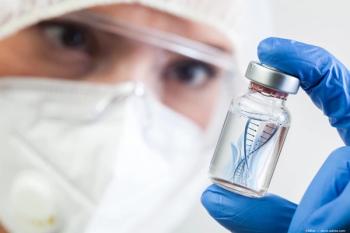
Post-LASIK dry eye, photophobia not aided by cyclosporine
San Francisco-Cyclosporine ophthalmic emulsion 0.05% (Restasis, Allergan) does not seem to provide a benefit for patients with a normal ocular surface when the drug is started postoperatively for either dryness or photophobia during the first month following LASIK. The light sensitivity in patients using topical cyclosporine was slightly higher 5 weeks after LASIK compared with the control patients randomly assigned to carboxymethylcellulose sodium 1.0% (Celluvisc, Allergan).
Emily Nosova, an undergraduate student at New York University, New York, and Ella G. Faktorovich, MD, conducted a prospective study to determine the efficacy of topical cyclosporine in dry eye and photophobia after LASIK performed using the IntraLase femtosecond laser (IntraLase Corp.).
Forty patients, all of whom wore soft contact lenses, participated in the study. The patients were evenly randomly assigned preoperatively to receive either topical cyclosporine or, as a control, carboxymeth-ylcellulose sodium 1.0%. Both medications were used twice daily beginning 1 week after LASIK and continuing for 4 weeks. The medications were started 1 week after LASIK because the vehicle in Topical cyclosporine is an emollient that has been associated with increased risk of epithelial ingrowth if used during the first postoperative week when the edge of the flap has not healed yet. All patients stopped wearing contact lenses 1 week before the LASIK was performed. Following surgery, all patients were examined weekly for 4 weeks, according to Emily Nosova, who was the research fellow at Pacific Vision Institute, San Francisco. Dr. Faktorovich is the director of the institute.
To describe the dry eye symptoms, the patients were given the Modified Dry Eye Questionnaire (Schein OD, et al. Relation between signs and symptoms of dry eye in the elderly: population based perspective. Ophthalmology 1997;104:1395-1401). To describe the photophobia symptoms, the patients were asked about sensitivity to light that makes it difficult to keep the eyes open in bright light such as outdoors in the sun, for example, as well as soreness and/or tearing when exposed to light.
Preoperatively, the patients were matched for age, refraction, and for preoperative symptoms of dry eye and light sensitivity.
"On the verbal descriptor scale, preoperatively, patients had mild dry eye; the symptoms peaked 1 week after LASIK, and then slowly decreased to slightly worse than the preoperative symptoms at 5 weeks postoperatively. We did not see a difference between topical cyclosporine and carboxymethylcellulose sodium 1.0%; in both groups the patterns were very similar," Nosova reported.
Using the visual analogue scale, the investigators found a similar pattern. The patients had mild dryness before surgery; the symptoms peaked 1 week after surgery, and then decreased in both of the study groups to close to the preoperative levels by 5 weeks after surgery.
Preoperatively, patients reported mild light sensitivity on the verbal descriptor scale.
"Interestingly," the investigators found, "the symptoms in the carboxymethylcellulose sodium 1.0% group decreased to less than the preoperative level by 5 weeks after surgery. In the topical cyclosporine group, the patients had slightly more light sensitivity than in the carboxymethylcellulose sodium 1.0% group."
The difference between the groups reached significance (p = 0.032).
Using the visual analogue scale, they saw a similar pattern. Before surgery the patients had mild light sensitivity and after surgery they had less light sensitivity in both groups. The topical cyclosporine group had a slightly higher degree of light sensitivity.
Newsletter
Don’t miss out—get Ophthalmology Times updates on the latest clinical advancements and expert interviews, straight to your inbox.



















































.png)


